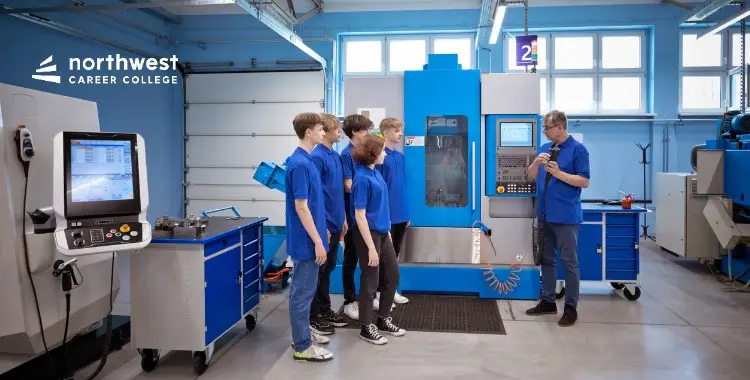How Much Do Trade Schools Cost Compared To Traditional Colleges?
- Trade School
- October 10, 2024
- 1.0k views
- 5 min read

Trade Schools and Traditional Colleges are excellent options for students who dream of achieving their lifelong careers someday. However, there are some differences that one must consider when choosing which one is right for them. One significant factor students consider when comparing trade schools to conventional colleges is the cost.
Both trade school and traditional college are valuable educations, but they rank in different prices and benefits. The Education Data Statistics reports that in-state students’ average tuition for one year at a four-year public college was more than $9,750. Put this into perspective: by comparison, private colleges averaged over $27,146 annually. The trade school option, on the other hand, is often much cheaper and takes less time. How do these trade schools compare costs to traditional colleges, and which is your better choice?
Table of Contents
Tuition Costs
When discussing cost differences, tuition is the first thing that comes to mind. Traditional colleges, especially four-year universities, tend to charge more for tuition. Students who attend conventional college often go for at least four years or more, and the cost builds up over time.
By contrast, trade schools only offer short courses in specific job skills. Tuition prices for trade schools are usually much more affordable due to program lengths that may last only one to two years. This makes trade school an affordable option for many students who wish to enter the workforce while taking as little debt as possible.
Average Cost Comparison:
- Four-year public college: Over $9,000 annually (in-state).
- Private college: Over $27,146 a year.
- Trade school: $5,000 to $15,000 total for the entire program.
Time to Complete the Program
Another important consideration is the length of the program. Traditional colleges generally take four years for a student to complete their bachelor’s degree, while some programs, such as engineering and medicine, take longer. This extended time in school also means more years of paying tuition, fees, and other expenses.
On the other hand, a trade school specializes in specific skills and training that better prepare students for a career. Most trade schools take only one or two years to complete, meaning the student will start working and making money sooner.
Because students in trade school can graduate faster, they can start working sooner than their peers who attended traditional college, thus allowing them to earn income and lowering the overall cost of education.
Additional Costs and Expenses
Students attending vocational and traditional colleges must consider other costs, such as textbooks, supplies, transportation, and housing.
Traditional colleges often come with many additional costs, depending on whether or not the student resides on campus. Room and board can easily add thousands of dollars each year to the total cost of college attendance. In contrast, many students attending trade schools continue to live off campus and commute to school by car or public transportation to save on additional costs towards their education.
Also, traditional colleges often require students to take general education courses unrelated to their career aspirations. Students may have to purchase books and materials for courses they will not necessarily use in their chosen career. Trade schools will focus directly on the job skills required, which can lower the cost of textbooks and supplies.
Earning Potential Upon Graduation
Another reason people go the traditional route is because they feel that a four-year degree will surely pay off in lucrative jobs. Although many jobs require a bachelor’s degree, several high-paying jobs still need to be filled.
Graduates of vocational school employment often enter such fields as plumbing, welding, or electrical work; each has a salary that can prove worth more than the extra time and cost of going through traditional college.
Debt and Financial Burden
Another huge concern for many students attending a traditional college is the amount of debt they will have upon graduation. Many students graduate from high-tuition, four-year programs carrying enormous debt from student loans. The Value Penguin estimates the average student loan debt throughout the U.S. to be about $32,375 per student.
By comparison, trade school graduates usually have much less burden by loans. Because the schools are less costly and short, students do not need to take substantial student loans, which enables them to start with less monetary burden. This allows the graduate to start earning and saving money much quicker, alleviating stress from paying off huge loans.
Conclusion
When comparing the cost of attending trade school to a traditional college, there may be little doubt that such schools represent a less costly and sometimes faster way to pursue a career. While many jobs are well suited to traditional college, a trade school does prove to be an excellent alternative for students who wish to enter the workforce sooner with less student debt.
If you’re ready to start your career without the high cost of a traditional college education, visit Northwest Career College today and enroll in one of our Trade School Programs. We’ve got your back!




